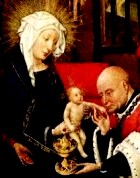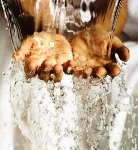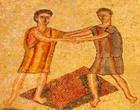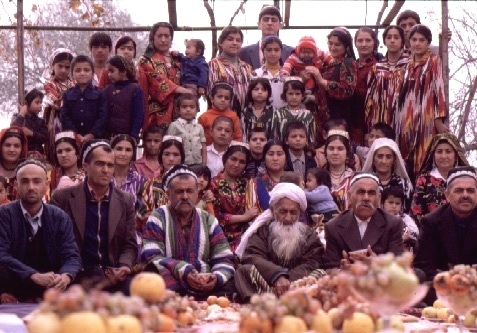Childbirth in the ancient world
Birth-rates are dropping all over the world, even though it’s safer and easier to give birth than every before. People are choosing to have fewer children.
This would have puzzled people in the ancient world. They loved children – the more, the better. They wanted as many as possible.
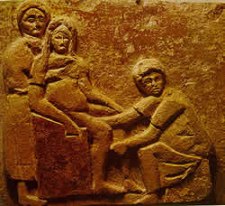
Woman giving birth on a birthing chair, Roman era
Why? Because children meant security
- as protection in your day-to-day life; the more people (especially men) there were in your family group, the safer you were from an attack, and in the uncertain ancient world attack was a real possibility
- as workers: more children meant more mouths to feed, but it also meant more workers to help with the herd or in the fields – and don’t forget that children in the ancient world worked from an early age
- as security in your old age; there was no pension, no aged care home, so hospitals; the only people you could count on were family members.
Preparing for the Birth
When you have many children, childbirth ceases to be a big event. You get organised. You know what equipment you will need for the birth.
But just to be on the safe side the Roman writer Soranus, in the 2nd century AD, made a list of all the things needed for a woman’s labour:
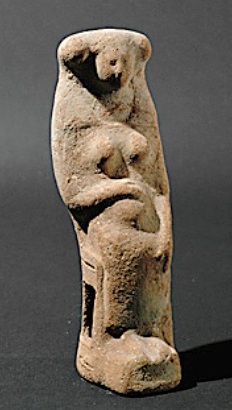
Figurine of a Phoenician goddess with pregnant stomach and birthing stool, circa 8th-6th century BC
‘For normal labour one must prepare beforehand: olive oil, warm water, warm fomentations, soft sea sponges, pieces of wool, strips of cloth, a pillow, things to smell, a midwife’s stool or chair, two beds and a proper room:
- oil for injection and lubrication
- warm water in order that the parts may be cleansed
- warm fomentations for alleviation of the pains
- sea sponges for gently washing the body
- pieces of woollen cloth in order that the woman’s parts be covered
- bandages so the new born may be swaddled
- a pillow in front of the woman, on which the baby is placed till the afterbirth has been taken care of
- good things to smell, such as penny royal, a clod of earth, barley groats, as well as an apple and a quince … to revive the labouring woman.’ (Soranus, Gynaecology, What Must One Prepare for Labour?)
Midwives
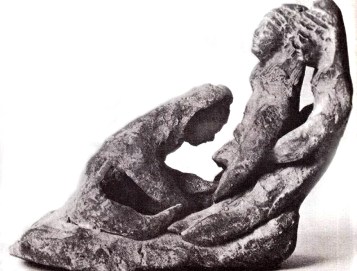
Ancient statuette of two midwives helping a woman giving birth
Two of the great heroines of the Old Testament are the midwives Shiprah and Puah – see Bible Heroines. The Egyptian Pharaoh ordered them to kill all male Hebrew babies as soon as they were born, but instead the two women devised a plan to save them:
15 Then the king of Egypt said to the Hebrew midwives, one of whom was named Shiphrah and the other Puah,
16 “When you serve as midwife to the Hebrew women and see them on the birth stool, if it is a son, you shall kill him, but if it is a daughter, she shall live.”
17 But the midwives feared God and did not do as the king of Egypt commanded them, but let the male children live.
18 So the king of Egypt called the midwives and said to them, “Why have you done this, and let the male children live?”
19 The midwives said to Pharaoh, “Because the Hebrew women are not like the Egyptian women, for they are vigorous and give birth before the midwife comes to them.”
20 So God dealt well with the midwives. And the people multiplied and grew very strong. Exodus 1:15-20
Midwives were significant figures in ancient society. Long practice made them skilled practitioners of their profession. Their duties were not as clear-cut as those of a modern midwife. They were expected to
-
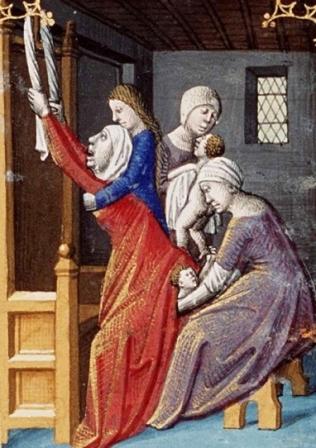
Birth of Esau and Jacob, Francois Maitre, circa 1475
provide comfort, pain relief and encouragement to the woman giving birth
- perform rituals and prayers that would protect the woman and her baby, and keep harmful forces away
- use her expertise to birth the baby and deliver the afterbirth
- deal with problems or complications during the birth
- supervise aftercare for mother and baby.
Childbirth – Delivery
There are no descriptions of childbirth in the Bible, but this is hardly surprising. The Bible is a compilation of men’s stories and concerns, intended for men to study. So the stories are tailored for the intended audience – men.
Women had their own stories, but since theirs was an oral tradition not written down, the stories were mostly lost to us.
Here and there in the Bible are remnants of the women’s stories – for example the wonderful, vindictive Song of Deborah in Judges 5.
Deborah’s song, sung by all the Israelite women, would have been at least as long as the men’s song – but it is lost forever. You can get an idea of what has been lost if you compare the Song of Moses (18 verses) with the Song of Miriam (1 verse) in Exodus 15.
So there’s no description of childbirth in the Bible. But we know what happened in surrounding countries and that can be a guide.
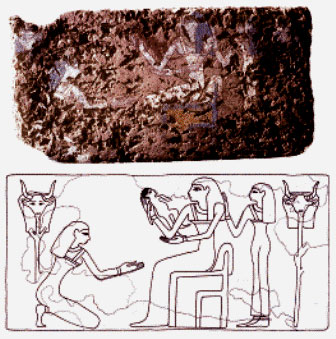
An Egyptian birthing brick; the original painted image shows the goddess Hathor presenting a child to its mother
- Women gave birth in a standing, kneeling or squatting position (probably a combination of these as the birth progressed.
- They used brightly painted birthing bricks to stand or kneel on over a scooped out hole, or they sat on a birth-stool/chair.
- In the Roman world there were special birthing chairs with a U-shaped hole in the seat and supports for the feet and back, and well-to-do Jewish women in the later biblical period would have used these too.
They used whatever furniture was suitable: the nomadic matriarchs in Genesis did not cart a birth-stool around with them, but the settled Hebrews in Egypt did.
Who was there at the birth?
 The woman giving birth was surrounded by women she knew and trusted – her relatives and friends.
The woman giving birth was surrounded by women she knew and trusted – her relatives and friends.
The women gathered around her, working in shifts to
- massage her,
- support her under the arms or
- wipe her face and body with damp cloths.
She had seen many other women giving birth, so she knew what to expect.
Baby Care – the Newborn
As soon as a baby was born, it was washed by the midwife. She used items that may seem strange to the modern reader: olive oil, salt, warm water, and sometimes diluted wine. Each ingredient had a purpose:
-
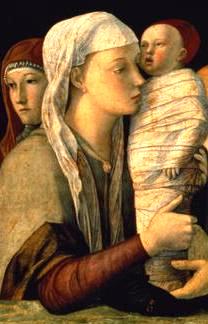
Bellini’s painting of the Presentation of Jesus in the Temple shows the baby Jesus wrapped in swaddling clothes
the salt and wine had antiseptic qualities
- the water melted and diluted them
- the oil was soothing to the baby’s skin.
Immediately after this cleansing, the baby was wrapped in coarsely woven linen strips. Luke’s gospel records (Luke 2) that Mary of Nazareth, mother of Jesus wrapped her newborn baby son in bands of cloth. This was normal practice.
The strips of cloth (swaddling bands) held the limbs of the baby firmly, though not tightly, giving the baby a sense of security, and confining it as it had been confined in the womb.
We do much the same with modern babies when we wrap them firmly in a shawl. Swaddling bands were believed to promote strong, straight bones as the baby grew.
Diapers in the Bible? Nappies?
Babies did not wear diapers or nappies; they ‘went’ into small clay pots that the mother carried with her. Mothers quickly learnt to read the signals a baby sent when it was about to excrete, and since it virtually never left its mother’s side, this was easier than it would be now.
This is still the common practice in many parts of the world.
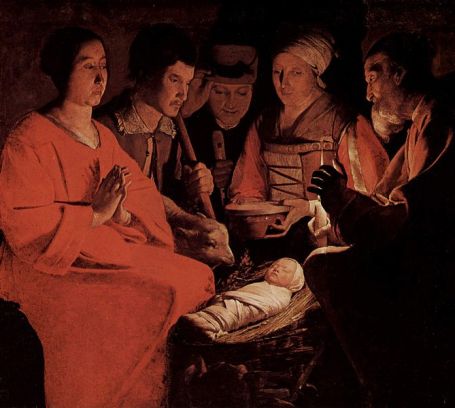
George de la Tour, the Newborn
Birth Control
Contraception was frowned on by the ancient Israelites. ‘Frowned on’ is putting it mildly. Tamar‘s husband Onan practises withdrawal before ejaculation, thus preventing Tamar from conceiving. God kills him as a punishment.
‘he spilled his semen on the ground whenever he went in to his brother’s wife(Tamar was a widow who according to the Levirate Law had to marry her dead husband’s brother) so that he would not give offspring to his brother. What he did was displeasing in the sight of the Lord, and he put him to death.’
Onan’s shame lives on: the modern term for withdrawal before ejaculation is ‘Onanism’.
This may startle the modern reader, but God’s first command to the Hebrews had been to ‘go forth and multiply’. Begetting children was their sacred duty. They did not just want to have children; they were required to do so.
In practice, this command was not a burden, since a woman breast-fed her baby for some years after its birth, and this cut down the number of her pregnancies.
How do we know? Bible evidence
- Professional midwives assisted at confinements. Genesis 35:17 describes Rachel bearing her last son; Exodus 1:15 mentions the Hebrew midwives in Egypt).
- Exodus 1:16 suggests that a woman in labour sat on a birth-chair. On the other hand, children are also described as being born “on the knees of” another person (Genesis 30:3; 50:23; Job 3:12). Many authors have concluded that childbirth took place on the knees of a midwife or relative who was helping the mother.
- Two Egyptian hieroglyphic signs meaning “to give birth” show that the Egyptians had noted the occipital position of the head in a normal birth, and that Egyptian women followed the common practice among early peoples and adopted a squatting rather than recumbent position during labour.
- In cases of multiple births, the rights of the first-born were jealously guarded and the birth sequence carefully noted (Genesis 25:25; 38:27).
 The new baby was given special care (Ezekiel 16:4), washed, rubbed with salt and wrapped in swaddling clothes (Ezekiel 16:4; Job 38:8-9).
The new baby was given special care (Ezekiel 16:4), washed, rubbed with salt and wrapped in swaddling clothes (Ezekiel 16:4; Job 38:8-9).- The mother would nurse the baby (Genesis 21:7; 1 Samuel 1:21-23) unless, probably among the wealthier classes, a wet nurse was hired (Genesis. 24:59; 35:8; Numbers 11:12).
- Apparently the baby was weaned at the age of three (II Macabees 7:27).
- On the day the baby was weaned, a feast was held (Genesis 21:8).
Summary
- Midwives helped women prepare for the birth of their babies. Theirs was an age-old skill, as we see from the story of Shiprah and Puah in the Bible.
- Giving birth could be dangerous but women survived it many times, producing large families.
- A woman was supported by her friends and family when she gave birth. Ancient statues and artefacts show how women managed before hospitals and maternity wards.
- Contraception was practised, but women in the Bible yearned for children of their own – as the stories of Rachel, Rebecca and Ruth show.
Save
Search Box
![]()
Childbirth links
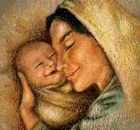
© Copyright 2006
Elizabeth Fletcher


